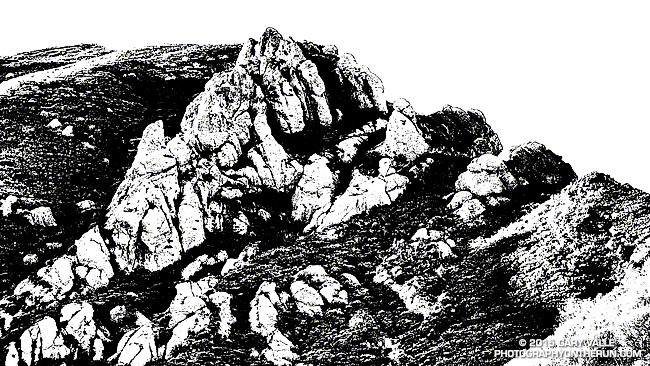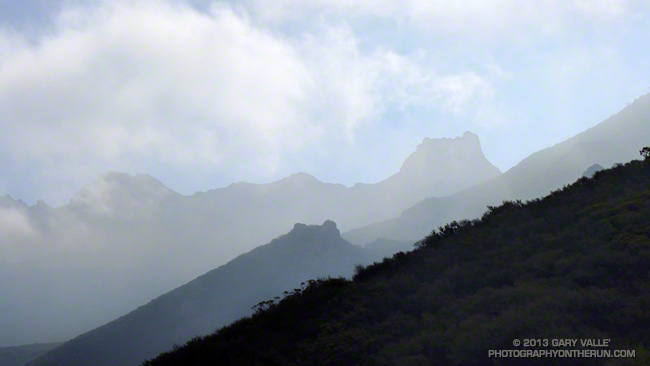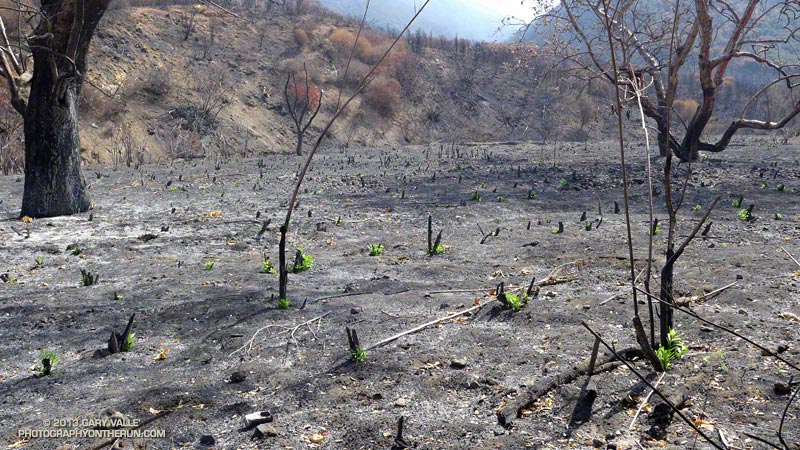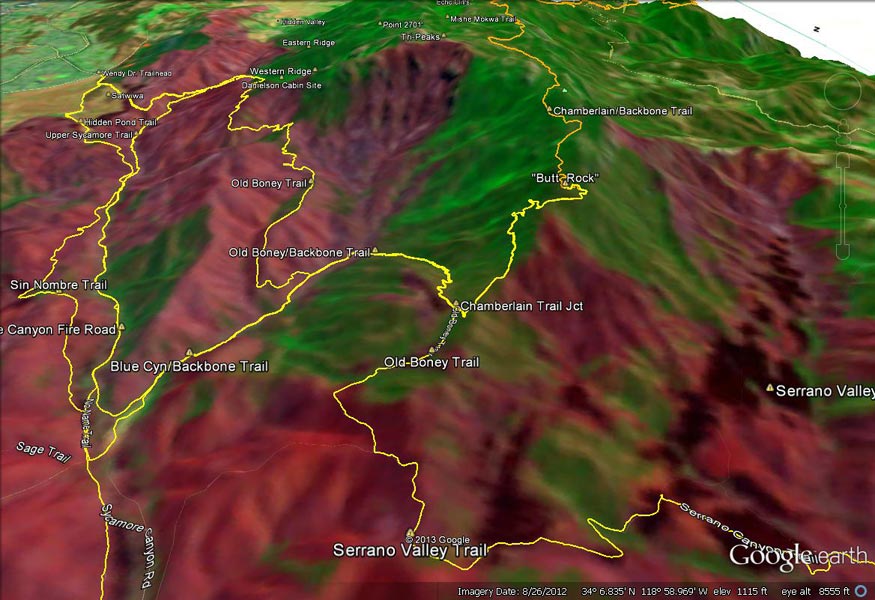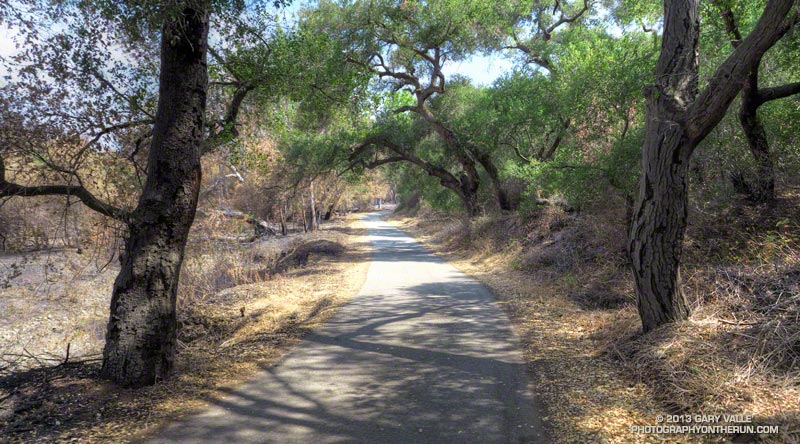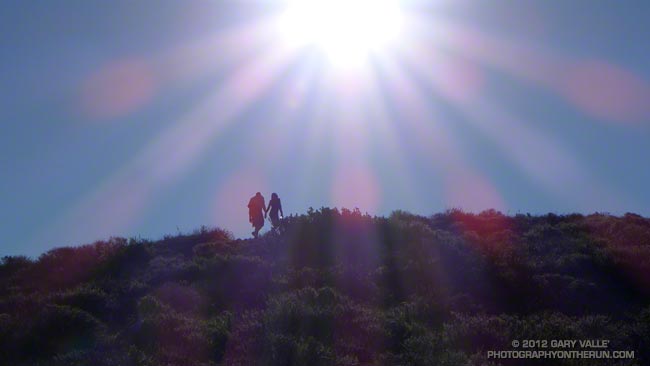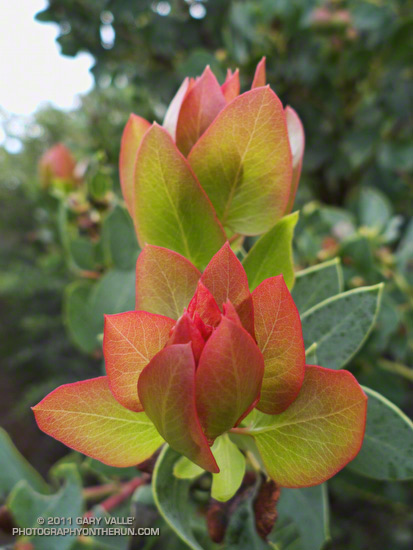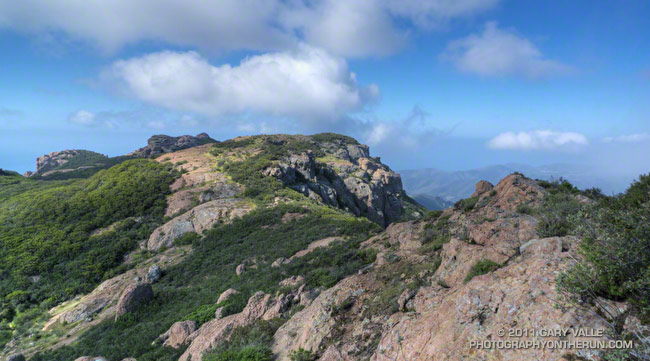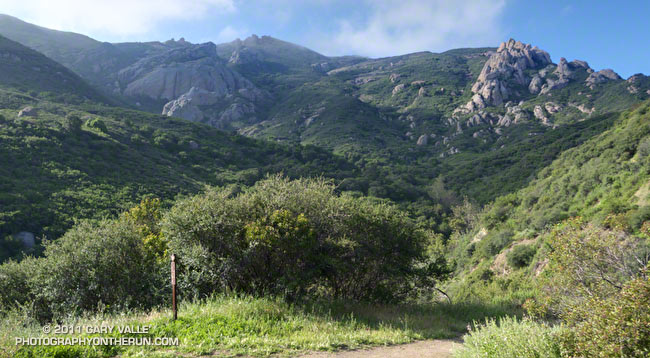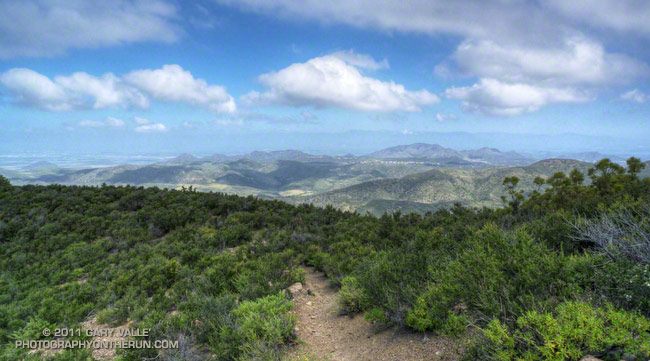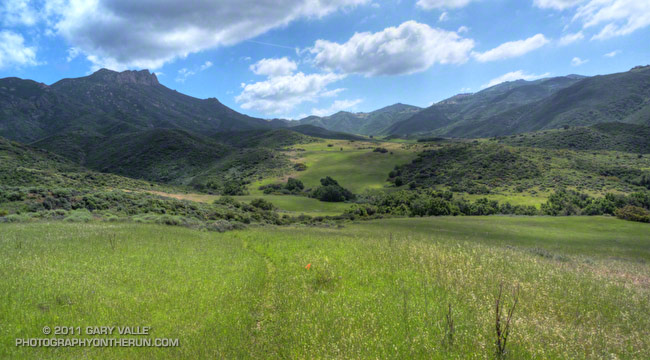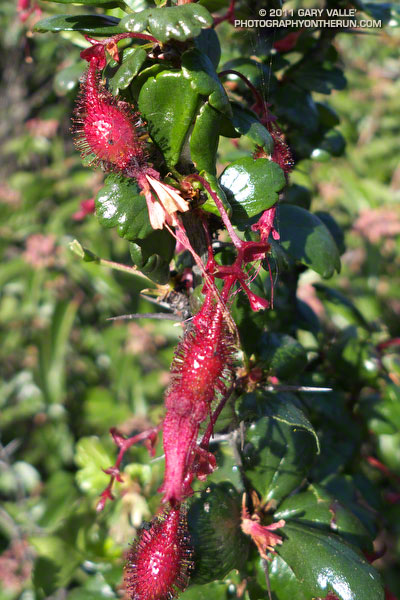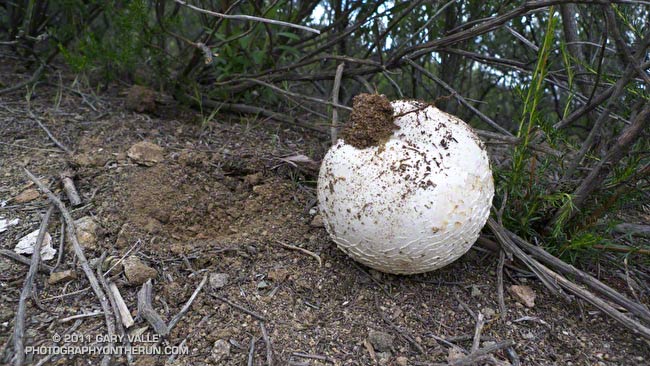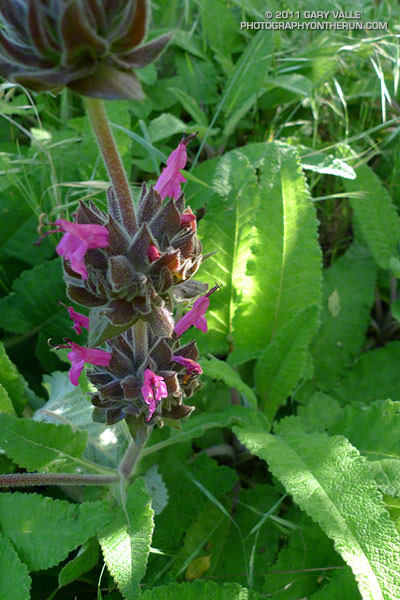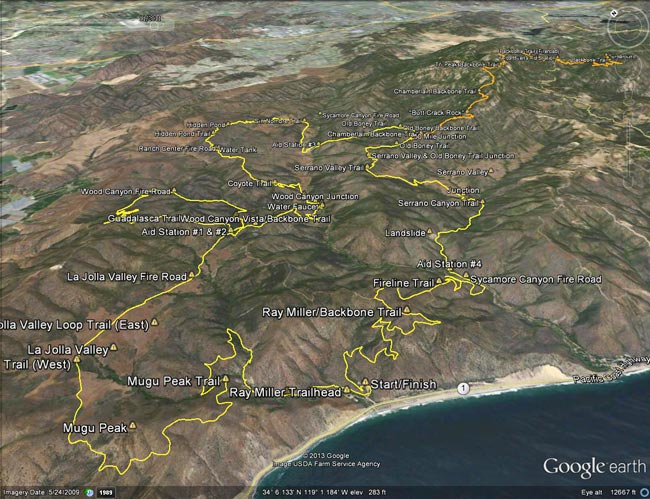
A luminous stream of headlamps wound up the switchback above the rocky streambed, the lights defining the movement of a huge and sinuous creature making its way up La Jolla Canyon.
In the darkness a great horned owl greets runners with a questioned, “who-whoo, who-whoo.” Excited runners answer back with cupped hands, “who-whoooo, who-whoooo.” Above, a thick veil of high clouds shrouds the last quarter moon. The clouds will also temper the sun, resulting in nearly ideal race-day weather. The trails are in great shape and there should be some fast times.
As we round the shoulder of a peak the gray-blue Pacific stretches out to Anacapa and the Channel Islands. The sun is still below the horizon, but the clouds to the east are now illuminated in a startling mix of orange and pink. It is an inspiring start to what will be an enjoyable run.
Being familiar with an area’s trails is both a pro and a con. The pro is that you know what to expect, but that is also the con. I still had mental scars from the last time I had done the Coyote Trail. The run had been long, the sun scorching and the humidity high. The steep stretch near the top had been an oven. Not today.
From the top of the Coyote climb there are wide ranging views in every direction. The trail continues north along a roller coaster ridge, past Ranch Center Road, where it becomes the Hidden Pond Trail. Rainfall this season has been well below normal — less than half of normal at Camarillo Airport — and the pond is little more than a damp spot in the brush.
Even so, the signs of spring are everywhere. The white blossoms of Ceanothus highlight the hills, and new grass carpets the open areas. Along the route I see yellow encelia, violet shooting stars, white milkmaids, purple prickly phlox, orange paintbrush and other wildflowers.
Everyone I talk to feels great. Some runners are escaping the cold climes of the Pacific Northwest and Midwest. Some are running their first ultra. There is talk of running shoes, places and races. The miles pass — not effortlessly, but with the right mix of more difficult and easier sections.
A quick stop at the Danielson aid station and I’m back on the trail. It’s a tough climb up the Old Boney Trail to the Chamberlain Trail and the turnoff for the 50 milers. A 100K looms at the end of March and the plan is to do some extra training miles later today. But I also have a 50K in two weeks and decided today’s extra miles should be flat. Deftly passing the 50 mile turn, I wonder if it might have been the better training choice.
In another 15-20 minutes I start the descent into Serrano Valley. Along with La Jolla Valley, which we traversed earlier in the day, Serrano Valley is one of the scenic jewels of the Santa Monica Mountains and a fantastic place to run.
Despite rain during the week, the creek crossings in Serrano Canyon are dry and the running excellent. In a few minutes I reach the landslide part way through the canyon and not long after that I hear the yells and see the smiles of the crew at the Sycamore Canyon Aid Station. As at all of the other aid stations, the volunteers are super-helpful and make sure I have what I need.
Some races feature one or two particularly long, difficult climbs. The Ray Miller 50K has (depending on how you count them) six climbs ranging from about 500′ in elevation gain to about 1000′ of gain. The 50 mile adds two climbs of 1000′ or more, the big one being the 1800′ climb from Old Boney to Sandstone Peak.
The last climb of the race — from Sycamore Canyon up the Fireline Trail, up the Outlook Fire Road, and then up the beginning of the Ray Miller Trail — is a tough one, gaining about 920′ in 2.3 miles. From the top of the climb the downhill to the finish is the favorite of many, and the hope is always that you will have enough left to run it well!
********
In the 50K Chad Ricklefs of Boulder set a new course record of 3:54:08 and Amanda Hicks’ 4:46:57 edged Meghan Arbogast by 52 seconds. Getting in some snow-free miles Aspen’s Dylan Bowman cranked out a blazing 6:45:08 in the 50 mile, and Amy Sproston — one of several runners from the PNW — flew through the course in 8:38:20.
Here’s an interactive, 3D terrain view of the 2013 Ray Miller 50K course, with the 50 mile option marked in orange. Mileages and locations are approximate and based on my 50K GPS track.
Many thanks to R.D. Keira Henninger and her support crew, the great volunteers, the sponsors, and all the runners for an outstanding event! Check the Ray Miller 50/50 web site for additional details and all the results.
Runner’s blogs/web sites: Dylan Bowman, Amy Sproston, Timothy Olson
Some related posts: You Can’t Run Just Part Way Up Serrano Canyon, Serrano Valley from the Chamberlain Trail, Return to Hidden Pond, Coastline From Mugu Peak
